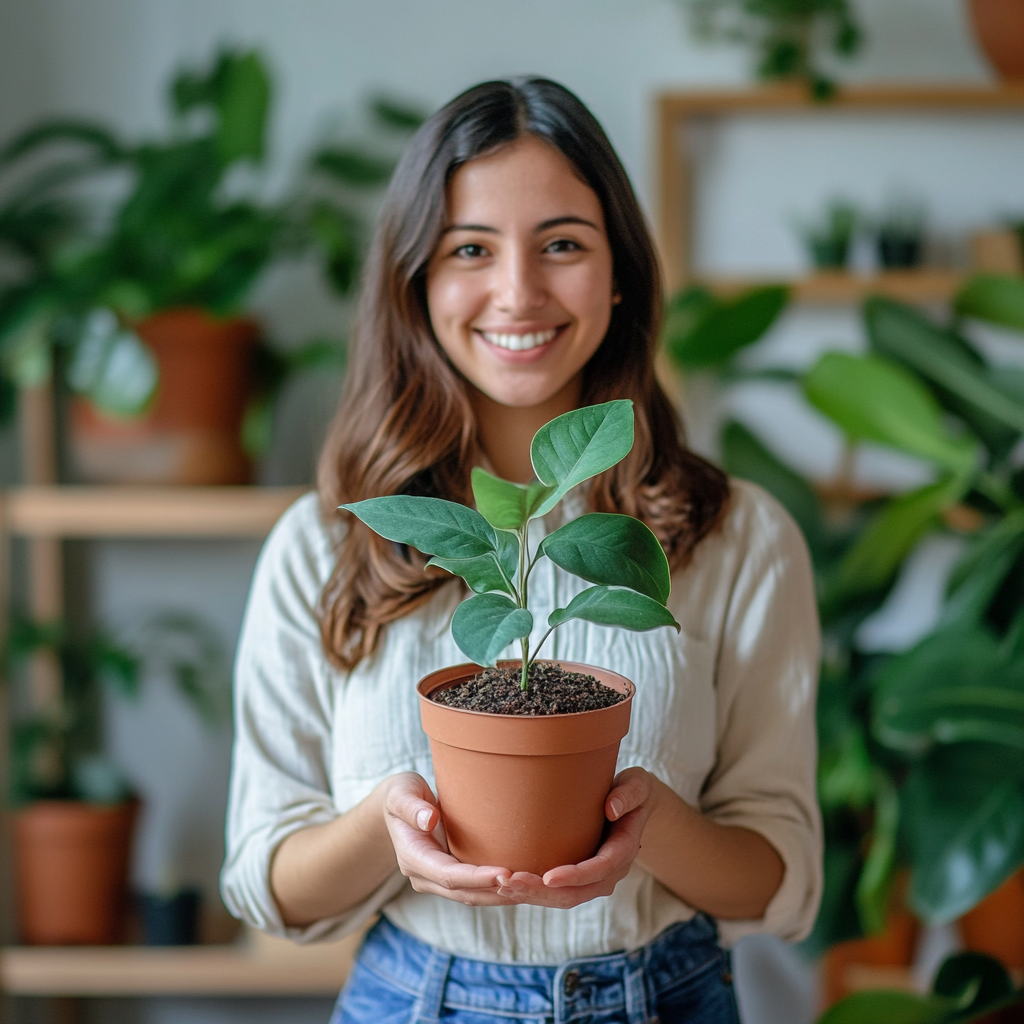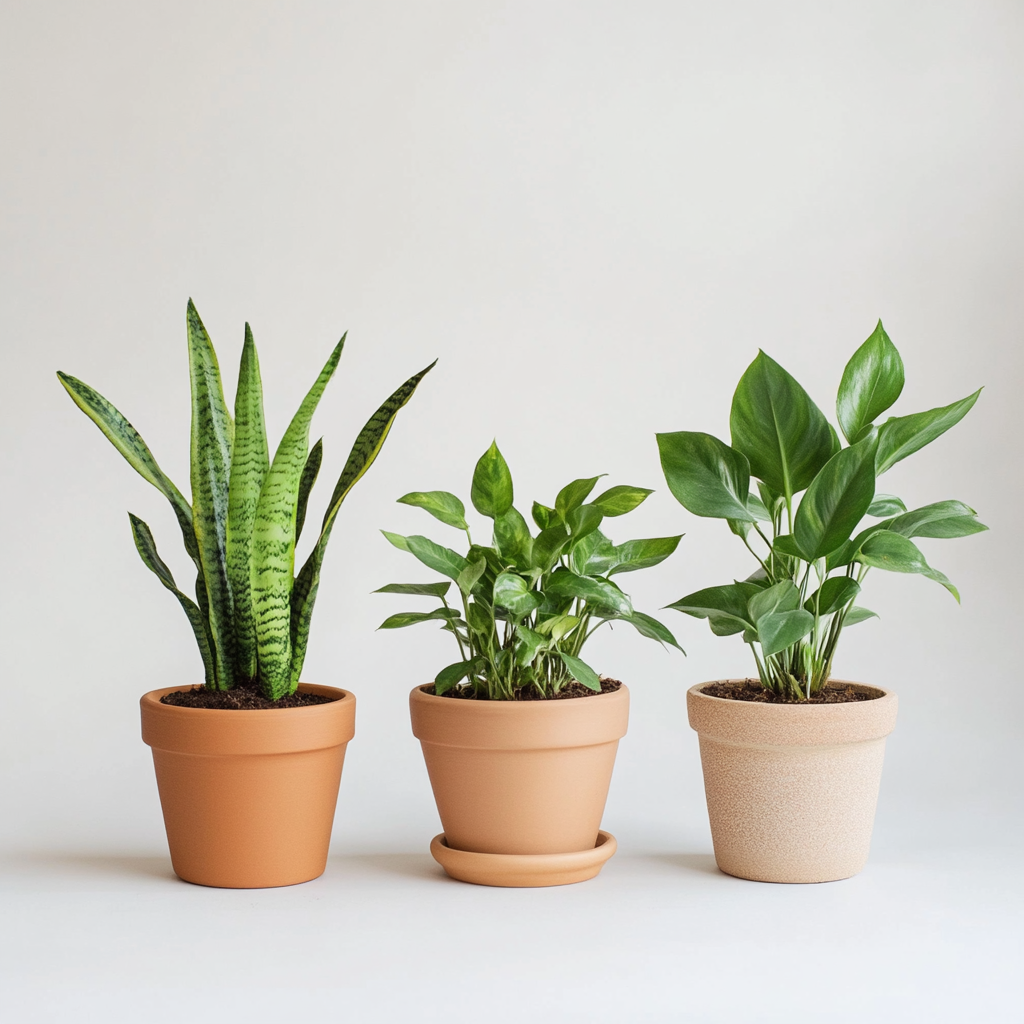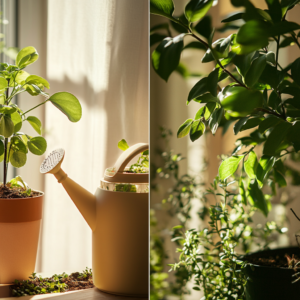Most people find difficulties starting a home garden. Especially if they have never cared for any plants before. You do not have knowledge to maintain an indoor garden; you should select houseplants that are easy to grow. This type of plant works for people who need a plant that is low maintenance and brings life to a room. An indoor garden gives one of life’s great pleasures. It is easier to care than you think. Here we will give you the essential guide to easy-to-care-for houseplants with your indoor garden.

Why Start with Easy-to-Care-for Plants is Ideal?
When you start gardening, avoid selecting those plants that need constant attention or specialized care. Low-maintenance houseplants are the first choice for beginners because they are hardy and adaptable to any environment. They can grow in various conditions, like forgetting to water or not having the best natural light in your home.

Benefits of Starting Simple Plants
Low Maintenance: Low-maintenance plants don’t require daily watering or humid situations. Some, like succulents, may live weeks without maintenance.
Mistake-Free Learning: As a beginner, you are bound to make mistakes. Easy-care plants are good for you to learn, allowing you to make mistakes without fear of losing them.
Immediate Gradification: It feels great to see your plants growing well. You gain confidence and will be inspired to add more plants to your indoor garden.
Clean Air: One or two plants would do their job of refreshing the air and creating a serene, stress-releasing atmosphere.

How to Choose the Right Plant
The key point is to consider that indoor gardening success starts with picking the right plant for the area. Try to match that plant’s needs to the conditions of your home. Here are some low-maintenance indoor plants that are guaranteed to thrive with minimal effort.
-
Snake Plant
It’s a great choice for beginners. The snake plant is almost hard to kill. It doesn’t mind if the light is low and there is occasional watering. It can also tolerate a little neglect.
Care Tips: Water at once, 2-3 week intervals. It grows well with indirect lights but can grow well in darker places too
-
Spider Plant
Spider plants can thrive nearly anywhere. They’re great for hanging displays, too.
Care Tips: Bright, indirect light and modest water. They love an odd mist.
-
ZZ Plant
Hard to kill, the ZZ Plant is fine in low light and doesn’t require much water. It helps to clean the air.
Care Tips: Water is applied when the top of the soil gets dry. Usually once every 2-3 weeks.
-
Pothos
Pothos is a low-care, versatile, fast-growing vine that grows well in various lighting conditions at home.
Care Tips: Allow dirt to dry out between waterings; low to bright indirect light.

Plant Care Tips
After choosing some nice plants, put them in a nice setting. Now practice caring for them to keep healthy and good looks. You shouldn’t need to overcomplicate the care for them, but it does need to follow some schedule. Here’s an easy way to list the main factors involved with plant care.
Watering
Know your plant’s water requirement. Some plants, like succulents, love being in arid soil and only need a good soaking every few weeks. Other plants, like ferns, are happy with slightly wet soil.
- Before applying water, research any special watering needs.
- Don’t overwater. This is likely to be the most common mistake of all. Allow the dirt some time to dry out between waterings, especially if you are caring for plants such as the snake plant or the ZZ plant.
- Water the soil, not the leaves. Allow the water to hit the soil instead of the leaves. Keep the leaves dry.
Lighting Requirements
Most indoor plants like indirect sunlight. Keep them near the window, avoiding getting direct sunlight, as it burns leaves. Some plants will do okay with low lighting. Also, ZZ plants and snake plants can survive low lighting conditions.
Humidity
Provide a humid environment for the plant. If you are living in dry areas, you can always create a more humid environment for your plants. Some plants, like succulents and snake plants, don’t like extra humidity and prefer drier environments.
Fertilizer Use
Most houseplants benefit from being fertilized once or twice a month during spring and summer, which is good for their active growth period. Use a balanced liquid fertilizer once a month for busy growth. Don’t overfeed too much fertilizer that will burn your plant’s roots.
Repotting
It’s time to repot indoor herb plants if they have outgrown their container or become tightly packed. These herbs tend to need to be repotted about every 1-2 years. Just like all the previous plants, you want to increase pot size. Only about one size at a time, about 2 inches bigger. If you go with too big of a pot, it could lead to root rot because the roots can’t take that much water.

Essential Tool to Care for Plants
After picking up your plants, it is time you think about how you will care for them. Indoor plant care doesn’t involve using many tools, but having the proper ones can make that little bit of work so much easier.
-
Watering Can
One of the most useful tools for reaching small areas and avoiding overwatering is a watering can. Overwatering will always be the most common mistake. So avoid it.
-
Moisture Meter
You are not sure when your plant needs water. A moisture meter removes such guesswork from watering. It measures the soil moisture levels. Thus, help you apply the proper amount of water.
-
Light Meter
Light is essential for the health of any plant. A light meter is used to measure the amount of light in your home. It will help you in placing your plants in the ideal spot for growth.
-
Pruning Shears
It is good to help your plants grow better and stronger by pruning them occasionally. Pruning shears come in handy when having to snip dead or yellow leaves that decrease the growth of your plants.

